Television producer Yamamoto Kazuhiro makes his directing debut with a full-length documentary about 104-year-old Ishii Tetsuyo, who has lived on her own since the passing of her husband 20 years earlier. The film shows her days spent cheerfully in the company of relatives and neighbors, offering a model for enjoying independence into old age.
Keeping from Being a Burden
Japan’s population of centenarians has quadrupled in the last two decades to more than 95,000 people as of 2024. Today, an average person can reasonably expect to live to 100, but what does that mean for society? Many in Japan struggle to feel optimistic about such a future.
A thinktank of PR company Hakuhōdō focused on redesigning lifestyles and social structures for a 100-year lifespan conducted a survey in six countries asking whether people wanted to live to 100. Only 27.5% of Japanese answered yes, the lowest of any nation. The primary reason given was that respondents did not want to become a burden to others in old age.
But there are also those like Ishii Tetsuyo, who refutes such negative sentiments and celebrates longevity by showing that living a long life does not mean troubling friends and family.
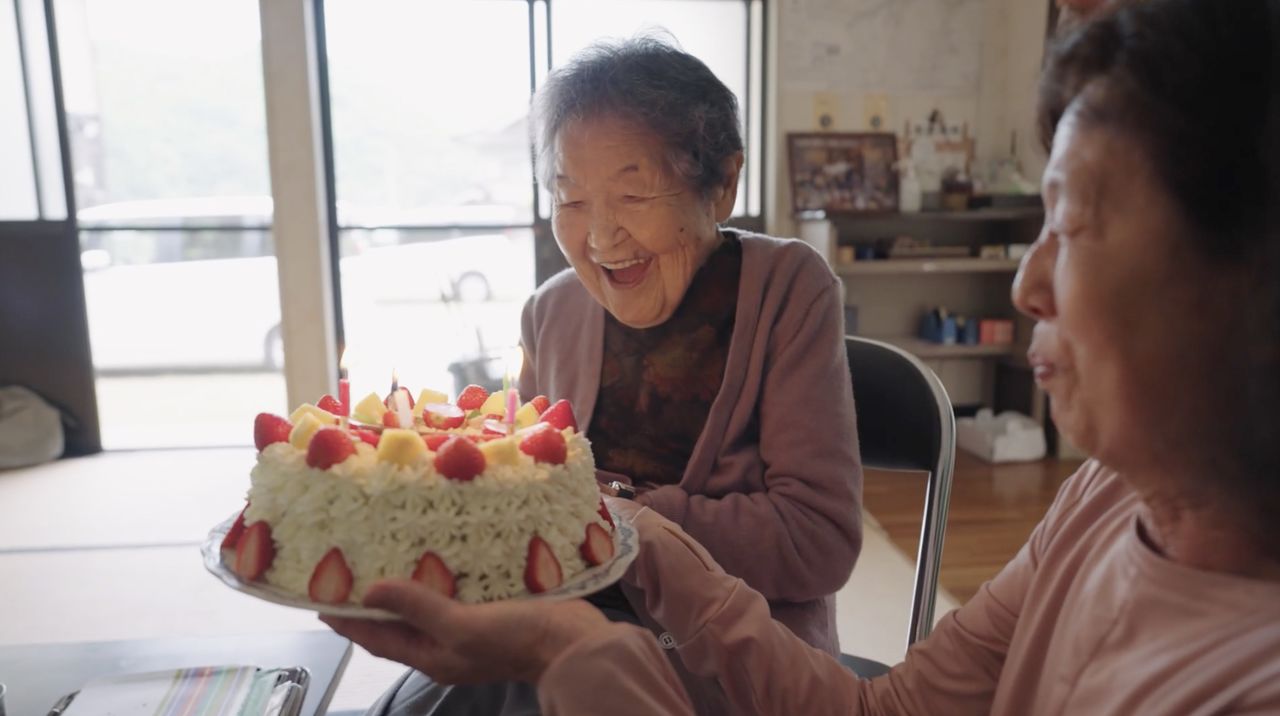
Tetsuyo celebrates her 104th birthday on April 29, 2024. She turned 105 after the film’s release. (© 104-Hitori Production Committee)
Born in Onomichi in Hiroshima Prefecture in 1920, Tetsuyo taught elementary school for 36 years before becoming a welfare commissioner in her local community. She married at the age of 26 and remained with her husband until he passed away at the age of 83. She has lived alone ever since, enjoying a quiet lifestyle close to the natural surroundings of Onomichi, with support from relatives and neighbors.
She became something of a local celebrity after the regional newspaper Chūgoku Shimbun ran a series of articles about her, which were compiled into two books. The works together sold over 210,000 copies and turned her into a model for living to be a centenarian.
Local television station RCC Broadcasting also ran a series about Tetsuyo, and it is from this footage that the documentary film was made.
Gentle Approach to Filming
The documentary’s director Yamamoto Kazuhiro, who also directed the television series, begins the film with Tetsuyo coming home from an extended hospitalization. Looking back at that period, he notes that the opening scene was his first meeting with Tetsuyo. “I had to go alone at first and film with an iPhone as there was only one chance at capturing footage of her leaving the hospital,” he recounts. “There wasn’t time for a pre-filming meeting to prepare, but meeting Tetsuyo felt familiar, like seeing an elderly neighbor.”
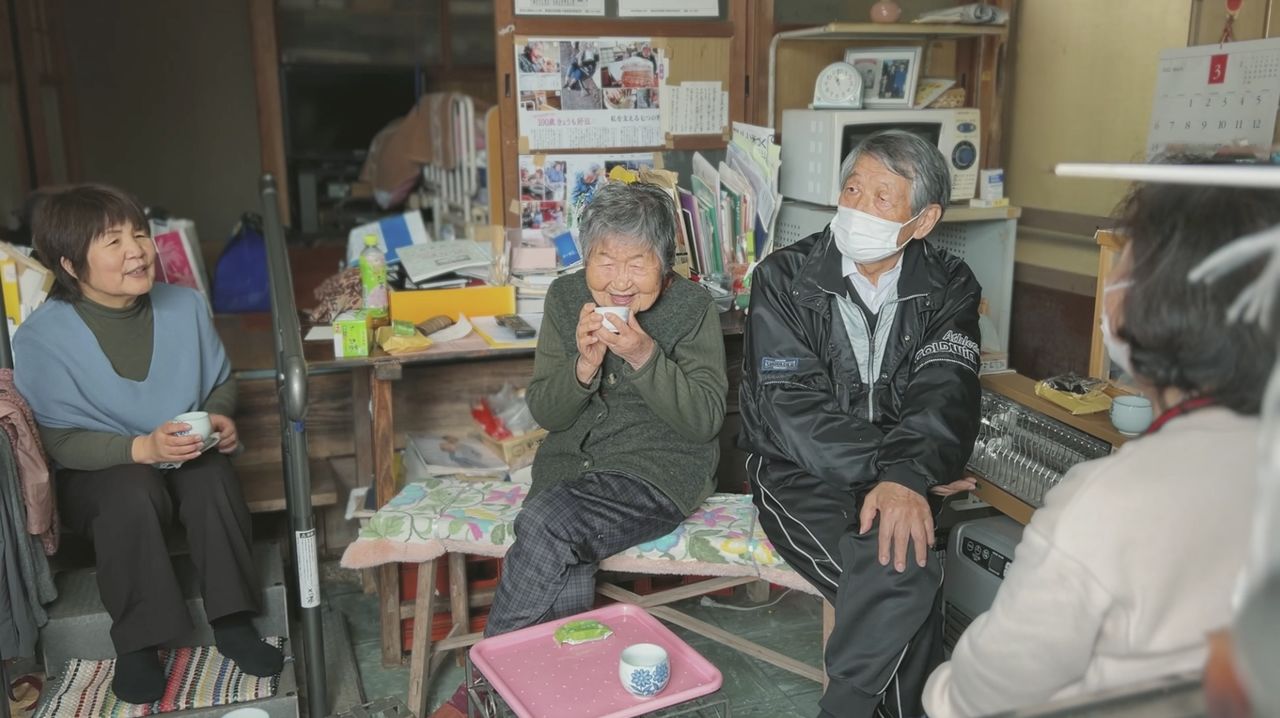
Relatives and neighbors came to welcome Tetsuyo home from the hospital. (© 104-Hitori Production Committee)
Yamamoto says that when the scene first aired it triggered such an enormous response from viewers that RCC quickly decided to continue with the series. “I really enjoyed working on location, and my own eagerness to see Tetsuyo became one of my motivations,” he says. The RCC aired short installments every two or three months, centering on seasonal event like Tetsuyo’s birthday and cherry blossom viewing.

Tetsuyo visits her family grave. (© 104-Hitori Production Committee)
Yamamoto explains that considering the age of their subject, the crew had to take a different tack. “We tried to keep filming sessions as short as possible so as to not overburden Tetsuyo, but her stories were so interesting that each session got longer and longer, with some running three or four hours. “When I thought we’d got enough footage, we’d call it a day, but really I wanted to stay and continue listening.”
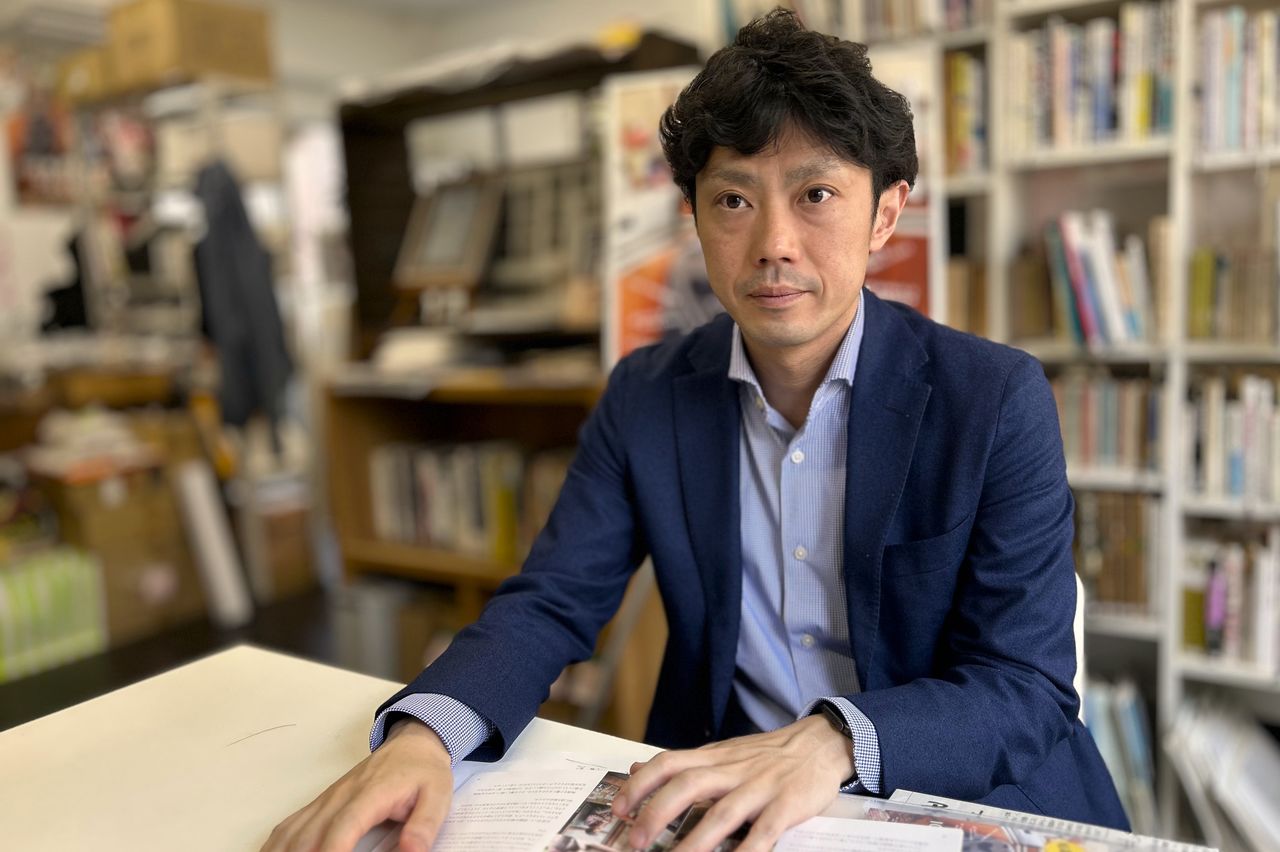
Director Yamamoto Kazuhiro. (© Nippon.com)
As a veteran producer, Yamamoto emphasizes the art of listening when making a documentary. “I try to maintain an ideal distance from my subject so as to not appear to be leading them, which would be immediately obvious,” he says. “There needs to be a slight tension in the interactions.” For the documentary about Tetsuyo, he felt it was vital to show her and those around her having fun. “At the same time, though, making it too lighthearted wasn’t right either, so we structured each episode around the idea of living to 100. Around August, for instance, we would ask her to share about her war experience.”
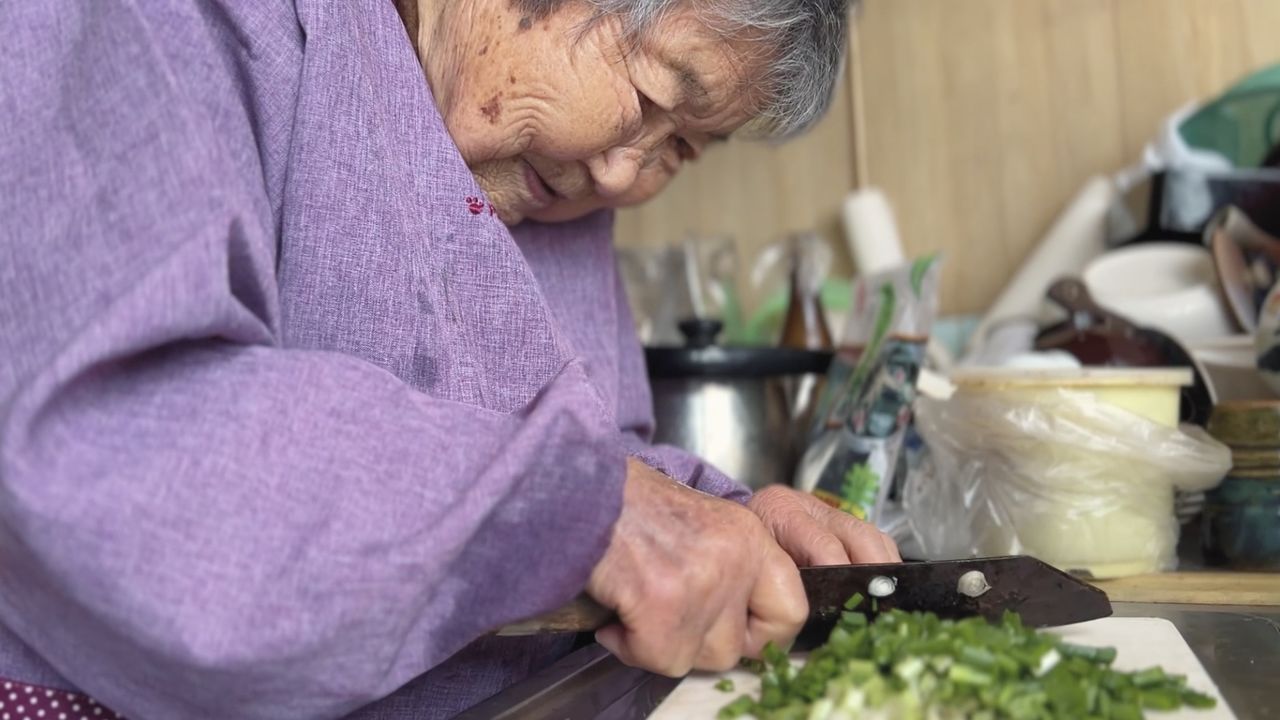
Tetsuyo chops spring onions with a well-worn knife. (© 104-Hitori Production Committee)
Many of Tetsuyo’s most profound observations were recorded during casual conversations, which more than scheduled sit-downs captured the centenarian’s daily routines like brewing tea, peeling a pear, or making miso soup, giving the film a powerful intimacy.
From News Feature to Film
There were scenes that Yamamoto was eager to film, such as Tetsuyo going to see her younger sister Momoyo, her only living sibling, who has been bedridden since suffering a stroke about 10 years ago. Momoyo lives in a nursing care facility near her home in Kobe, and when Tetsuyo talks about her sister, who is seven years her junior, tears streak her usually smiling face.
“Tetsuyo’s niece Yayoi asked that we film that because there is no telling when their last meeting will be,” Yamamoto says. “Restrictions during the pandemic meant we couldn’t take a full team, so I went alone to film.”
During their short talk, Tetsuyo, who was 102 at the time, speaks affectionately to her sister despite the plastic barrier separating the two. Capturing this moment of drama amid Tetsuyo’s otherwise tranquil daily life Yamamoto and others involved in the project to give serious thought to compiling the footage into a documentary for theatrical release. “From that point, I felt that Tetsuyo’s story had grown beyond a general interest series for television.”

Tetsuyo faces backward as she descends the steep slope from her house, which she does to keep from falling. (© 104-Hitori Production Committee)
Yamamoto has filmed countless individuals, but says that finding such an endearing personality as Tetsuyo is rare. Comparing her to another captivating subject he filmed, the international pianist Ingrid Fuzjko Hemming, he says that Tetsuyo has the same aura. “It’s like being in the presence of a master of living. I wanted to film everything, even her just pulling weeds around her house.”
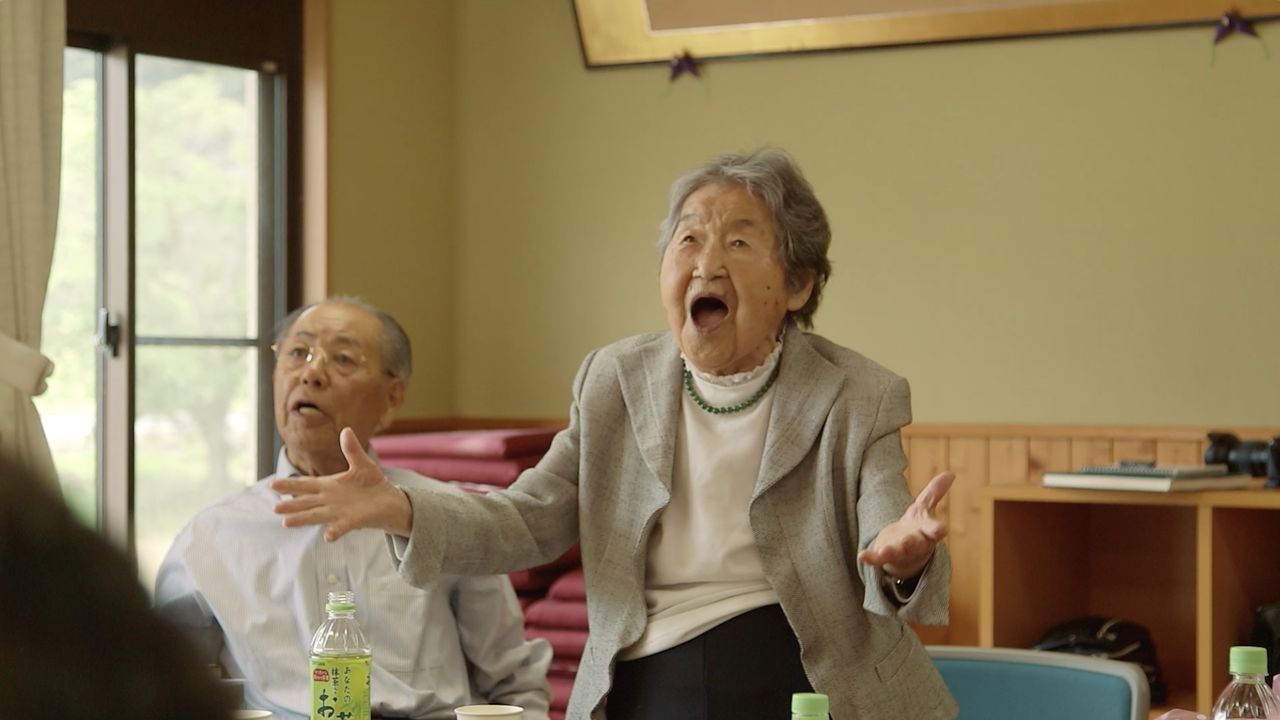
Tetsuyo sings a graduation song for former students. (© 104-Hitori Production Committee)
Secret to a Long Life
In making the documentary film, Yamamoto says that he tried to show Tetsuyo as more than just an adorable older woman to uncover what hides behind all her smiles. “It provides a clue as to why Tetsuyo, who has no children, lives alone,” he says. “I don’t think she’s motivated by some old-fashioned custom of protecting the ancestral home. She genuinely wants to keep living in the house she shared with the husband, whom she loved dearly. Her other relatives understand this and support her.”
Tetsuyo continues living in her own home with aid from short-term nursing care visits. When she’s at home, she needs assistance from those around her for many things, but she’s also a master of getting people to help.
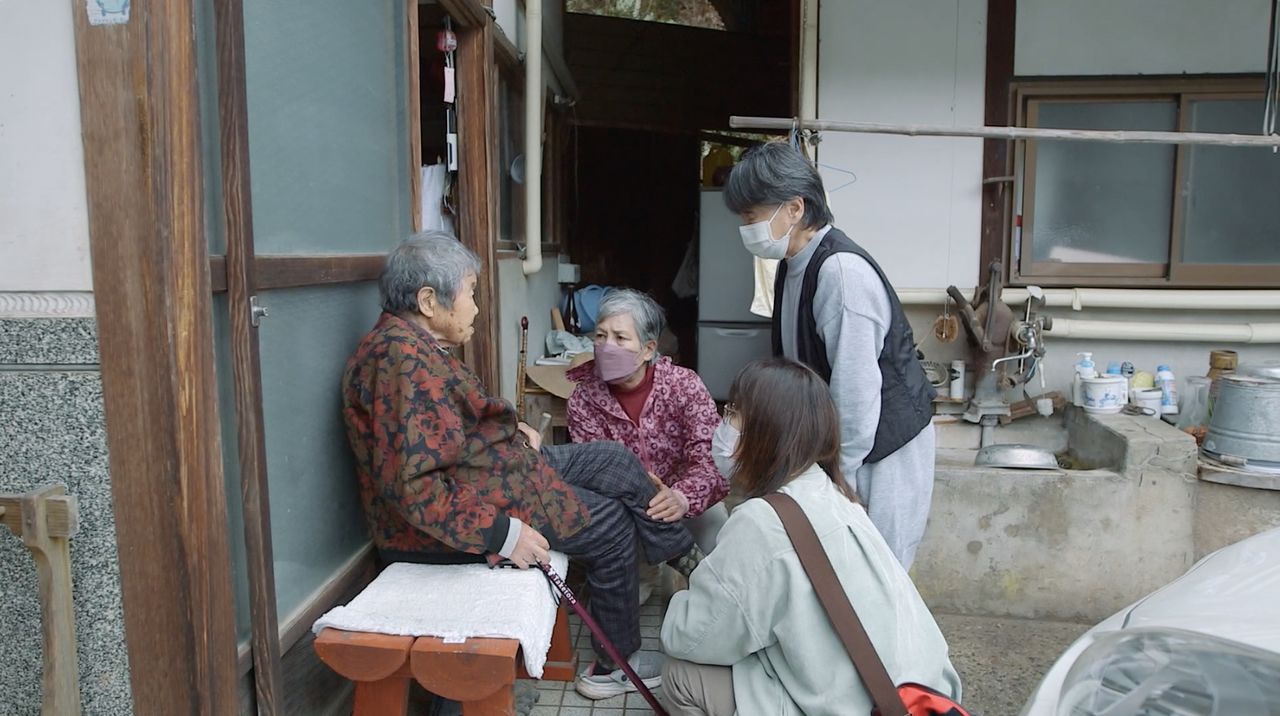
Tetsuyo brushes off worries about a leg problem, saying that it is nothing to be worried about. (© 104-Hitori Production Committee)
“Tetsuyo is always saying that she is a bother, but she never goes on about her physical limitations,” declares Yamamoto. “Rather, she’s focused on doing what she can do. She willingly accepts help from others, and in that there is a lesson. It would certainly be easier for her to move to a care center, but she would only deteriorate in such a place. Even when she needs to be hospitalized, her desire to return home keeps her going. I think living in that house on her own is the secret to her longevity.”
The scenes of the film will surely resonate with audiences, who are well aware of the issues Japan faces with its aging society. Even as the camera focuses on Tetsuyo, though, those who help look after her are also in the spotlight.
Yamamoto says that Tetsuyo’s niece succinctly summed up her aunt’s secret to living as doing things for other people. “When we live only for ourselves, there is little to keep us going. But Tetsuyo’s niece in helping support her aunt is also being energized by giving of herself for someone else. The same is true of Tetsuyo, who founded what she calls a good friends club for older residents some 50 years ago, and which continues to reap rewards for everyone. I think that’s a wonderful cycle of giving, and I’m happy we had the opportunity to make the film so that that energy will reach an even broader audience.”
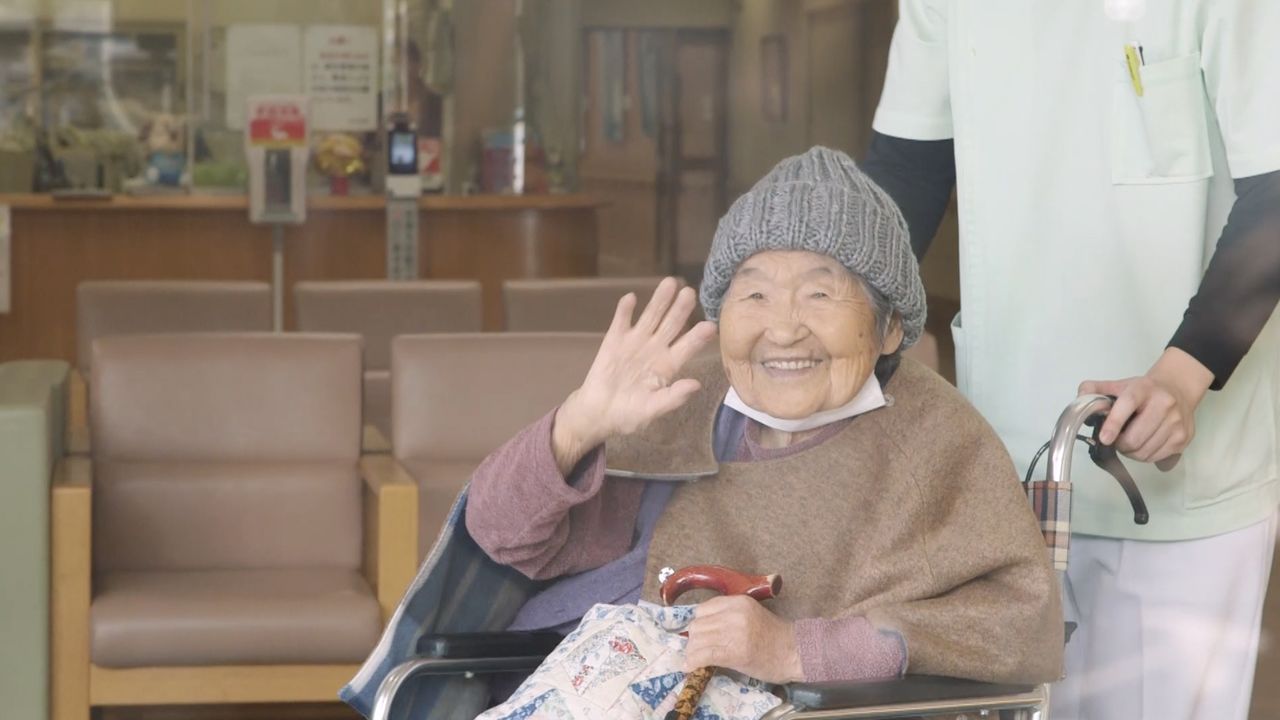
(© 104-Hitori Production Committee)
Trailer (Japanese)
(Originally published in Japanese. Banner photo: Ishii Tetsuyo. © 104-Hitori Production Committee.)

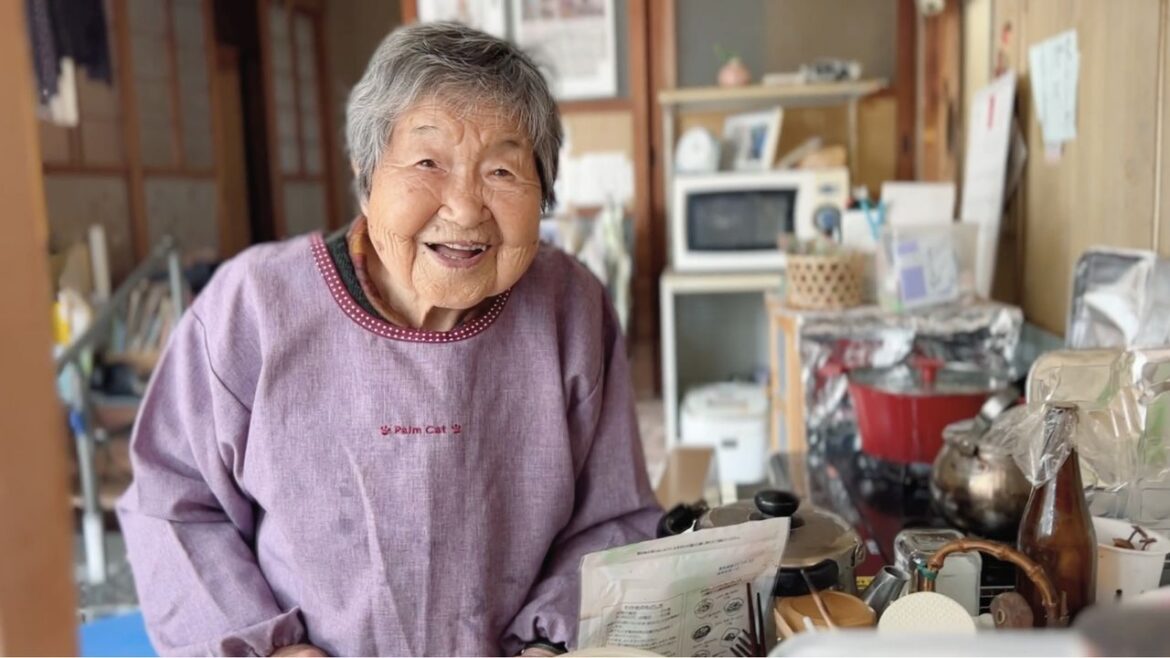
AloJapan.com